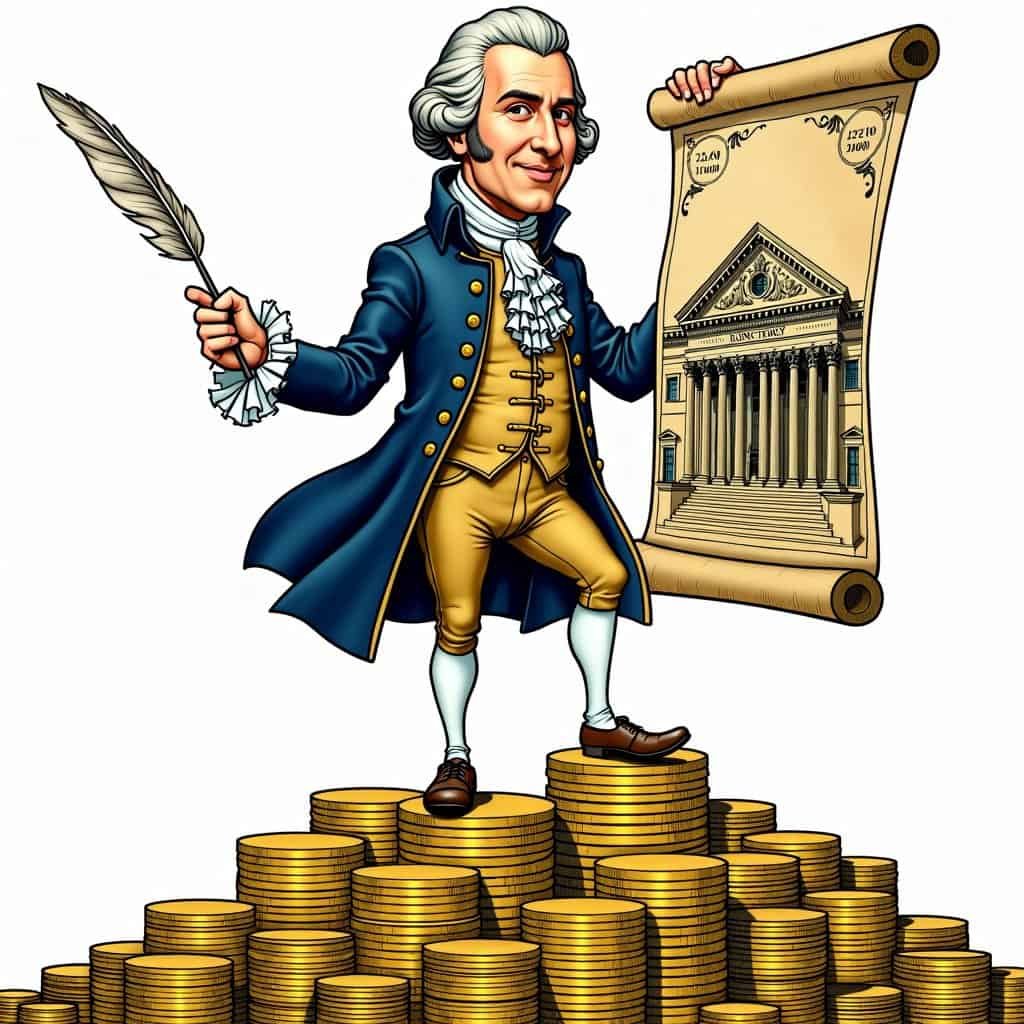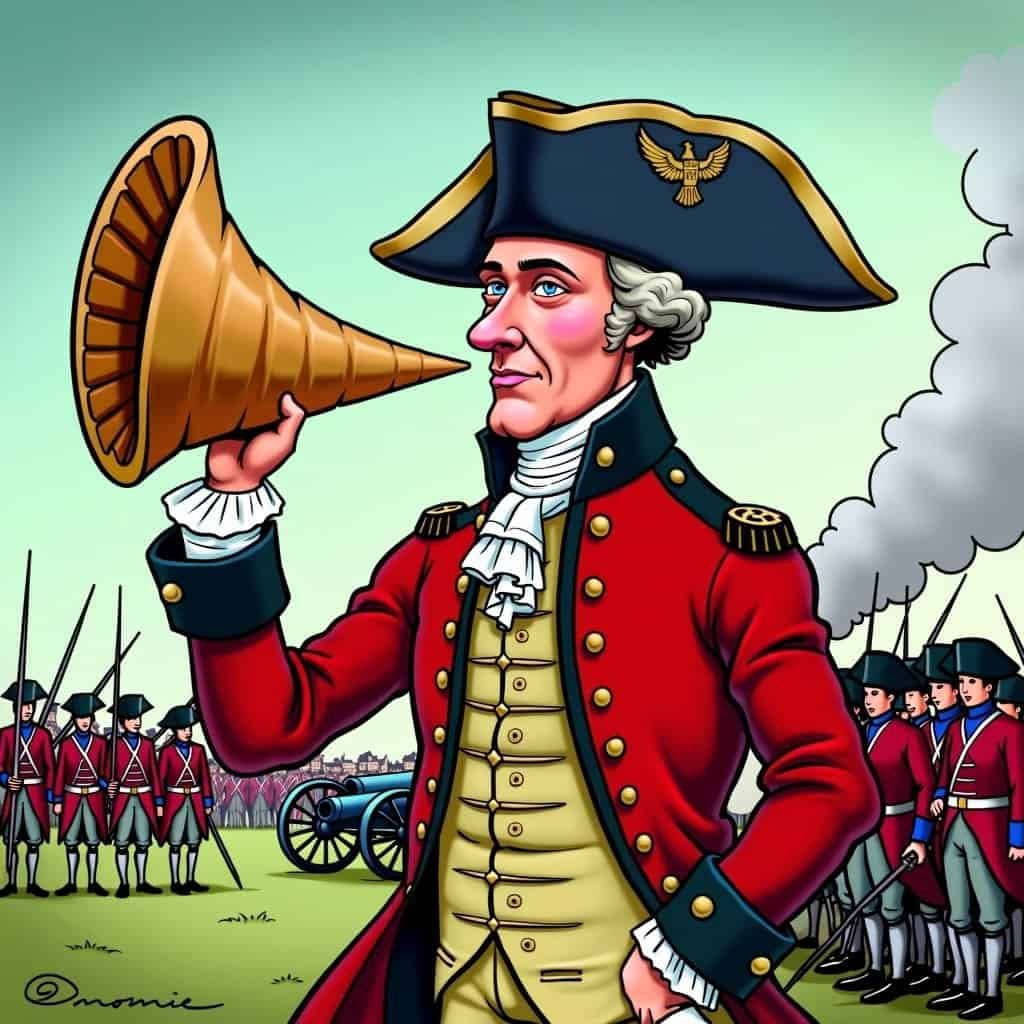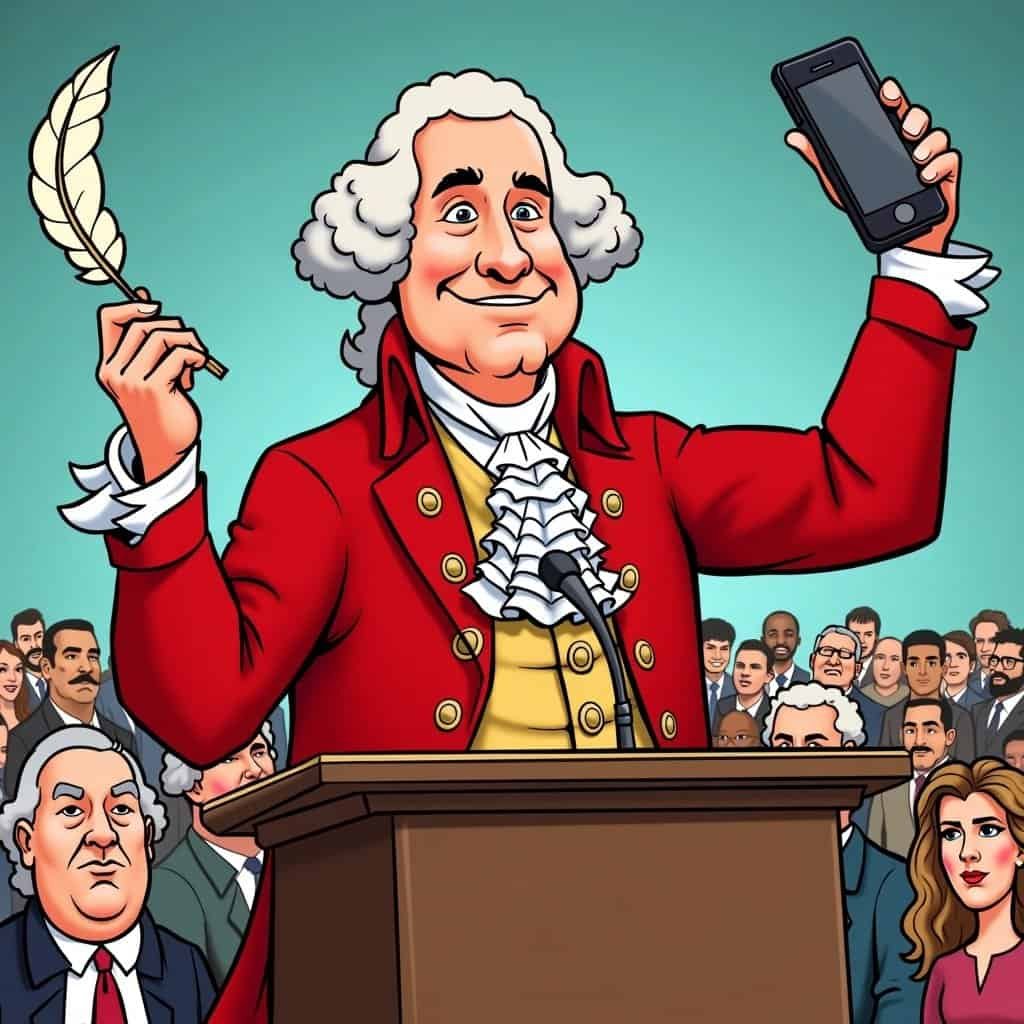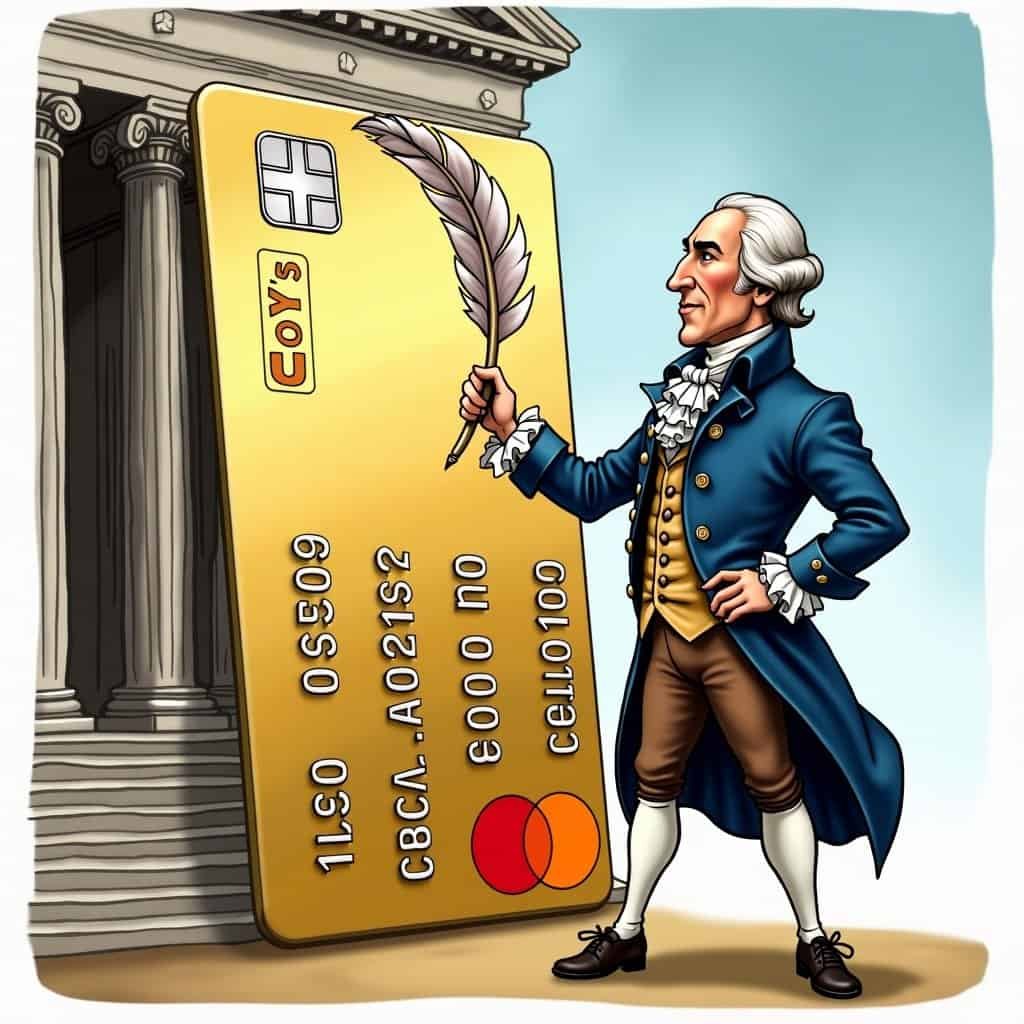When Alexander Hamilton burst onto the scene with his sharp wit and brilliant mind, he didn’t have social media to spread his economic ideas. Yet, this founding father managed to create a financial system that even today’s Federal Reserve would admire. Before our modern money-printing machine, there was Hamilton’s economic vision—a practical masterpiece that, believe it or not, would make even fiscal conservatives cheer.
Let’s be honest—Hamilton wasn’t advocating for cryptocurrency in colonial times, but he knew a country couldn’t spend its way to prosperity. Hamilton, a financial wizard with the charisma of a Broadway star, realized America needed a robust financial structure to avoid becoming a mess of IOUs and play money. So, he boldly established the Bank of the United States in 1791—essentially the great-grandfather of today’s Federal Reserve.
Imagine this: newly independent America wasn’t exactly a model of economic stability. States’ monetary policies were as scattered as a teenager’s bedroom. Hamilton figured running a nation without a central financial system was like herding cats while juggling fireballs. His answer? A national bank to manage debt and stabilize the economy, while politely telling state-level economic chaos to take a hike.
Hamilton’s Economic Principles
Hamilton’s Economic Pillars
- ✅ Attract investment
- ✅ Establish credit
- ✅ Ensure government solvency
- ✅ Encourage private enterprise
- ✅ Promote free market growth
In today’s terms, Hamilton was like a startup CEO teaching his investors Economics 101. He believed in attracting investment, establishing credit, and making sure the federal government wasn’t walking around with empty pockets. Unlike today’s big spenders, who think wealth never runs out, Hamilton stressed that economic strength came from encouraging private businesses and letting the free market do its thing.
While some modern politicians might frown at any system that doesn’t involve forcibly sharing success, Hamilton’s bank wasn’t a money pit for social experiments. No way! He intended it to be a solid foundation for a growing economy, not a bloated beast demanding higher taxes to keep itself alive. The kicker? Even with his centralizing tendencies, Hamilton would be shocked at how much the Federal Reserve’s role has expanded—he’d probably drop his quill in disbelief.
Hamilton’s Vision for America
You see, Hamilton had a dream—one that championed financial responsibility. He knew that for America to be taken seriously globally, its credit needed to shine brighter than the latest viral meme. While some modern politicians are busy finding ways to raise debt ceilings, Hamilton calculated ways for America to break free from financial burdens, cementing our image as a nation of achievers, not takers.
Hamilton’s Economic Legacy vs. Modern Federal Reserve
| Aspect | Hamilton’s Vision | Modern Federal Reserve |
|---|---|---|
| Primary Goal | Economic stability and growth | Monetary policy and financial regulation |
| Government Role | Limited intervention | Extensive intervention |
| Focus | Promoting private enterprise | Managing inflation and employment |
| Approach to Debt | Debt reduction and fiscal responsibility | Debt management through monetary policy |
Conservatives value economic restraint and self-reliance, principles Hamilton unofficially established before the Constitution’s ink was dry. His bank wasn’t about creating dependence on government. Instead, it provided the framework for entrepreneurial growth and prosperity—ironically, arguments that some modern politicians often dismiss as outdated or insensitive.
Yet, here we are, in an America where Hamilton’s lessons still hold true. Private industries thrive when the government’s role is limited, and economic innovation surges when left unchecked. The Federal Reserve may be the flashy sequel to Hamilton’s original economic blockbuster, but let’s not forget the brilliant, red-haired man (or at least we imagine his hair was impressive) left us a playbook worth following.
So the next time someone criticizes the conservative commitment to economic independence as old-fashioned, remember this: these ideas made Hamilton’s vision revolutionary. In an era addicted to bailouts and government handouts, Hamilton’s example pushes us to embrace fiscal responsibility and the lasting strength it provides for future generations. Here’s to the man who proves the pen really is mightier—especially when the ink is red, not green.






